Capturing the Real-Life Suffragette Movement
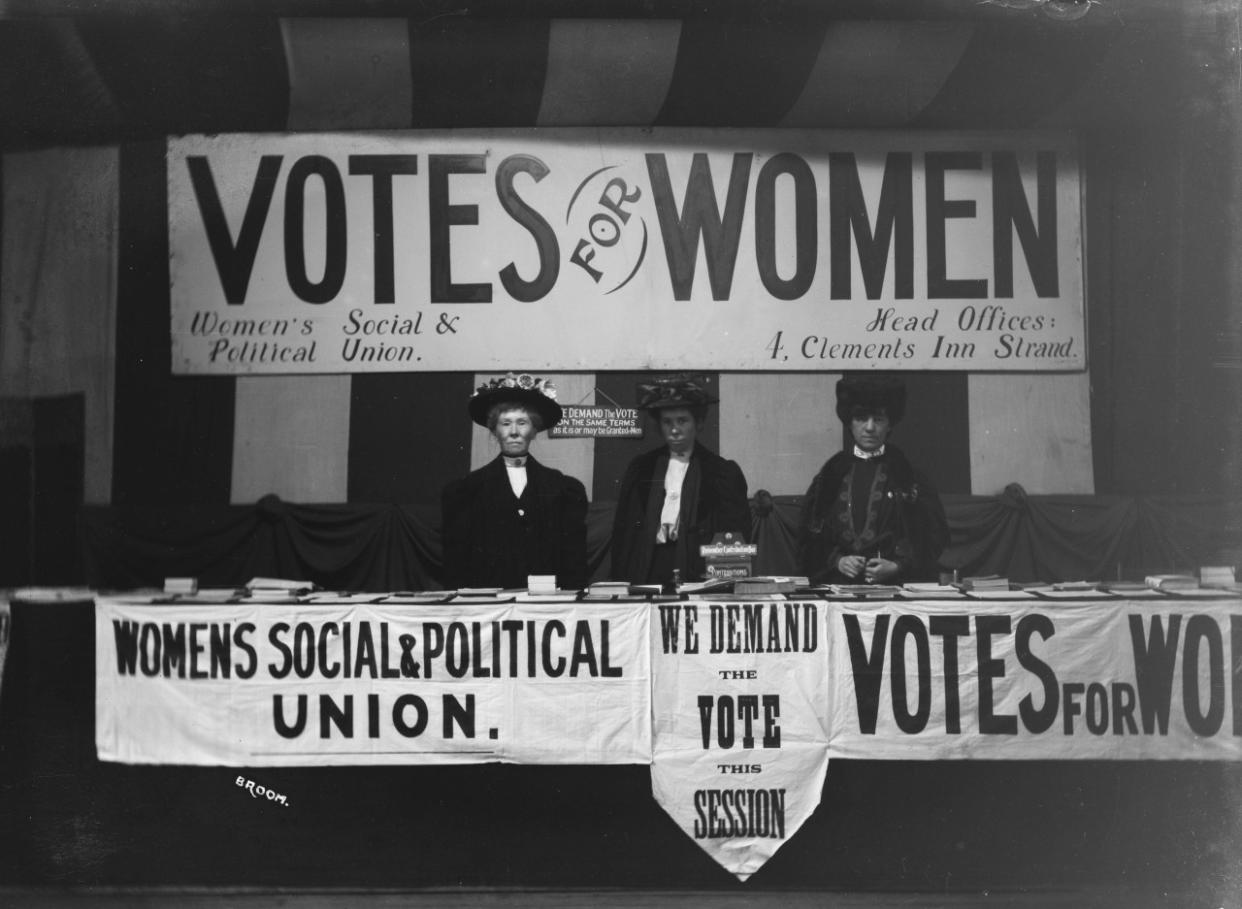
Women’s Social and Political Union Exhibition stand, probably at Claxton Hall during the Women’s Parliament in February 1908. (Photo: Christina Broom/Museum of London)
Today, the film Suffragette is released in the United States, bringing the story of the women who fought for the right to vote in the United Kingdom back into the forefront of our pop cultural dialogue. But while the new movie, with its star-studded cast of Carey Mulligan, Meryl Streep, and Helena Bonham Carter, is visually and emotionally arresting, the actual black-and-white photos of early 1900s suffragettes are just as captivating.
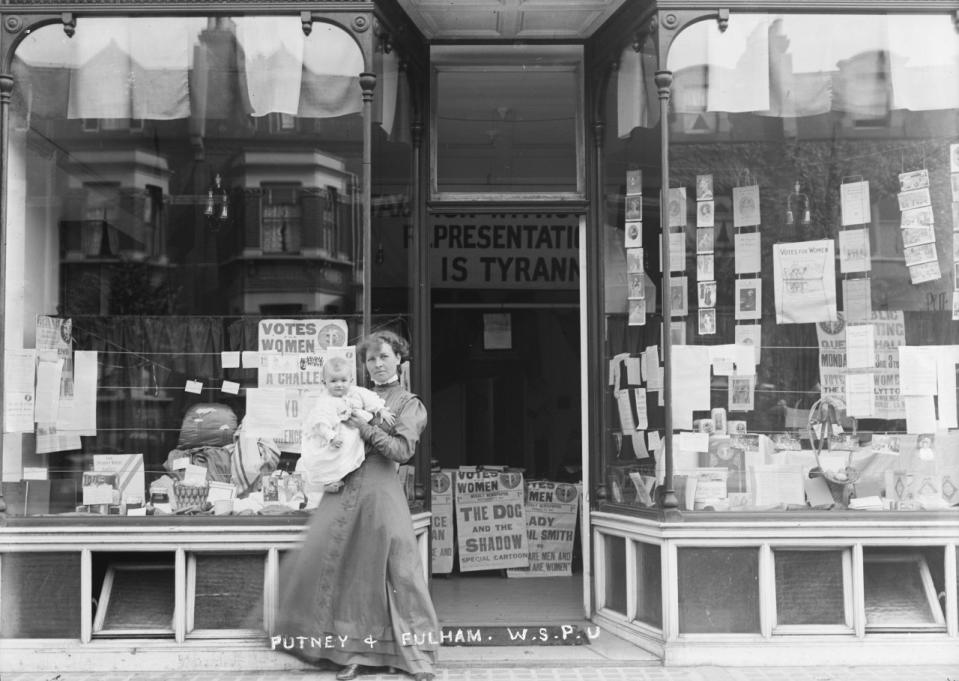
The Putney and Fulham WSPU branch shop and office on 905 Fulham Road in 1910. (Photo: Christina Broom/Museum of London)
Many of these photographs were taken by a female photographer named Christina Broom, who at 5 feet tall and with the help of her daughter Winnie, took hundreds of photos of the fight for women’s suffrage up until the dawn of the Second World War. Broom was not a suffragette by any means — she did not participate in any political activities and took the photos for their commercial value — but she was the breadwinner of the family, taking care of an husband disabled from a cricket injury and running her own photo studio. She started working at age 40 and didn’t stop until her death at age 75. While not all of us can make the trip to the Museum of London to look at her prolific archives, many of her best photos can be found in the book, Soldiers and Suffragettes: The Photography of Christina Broom.
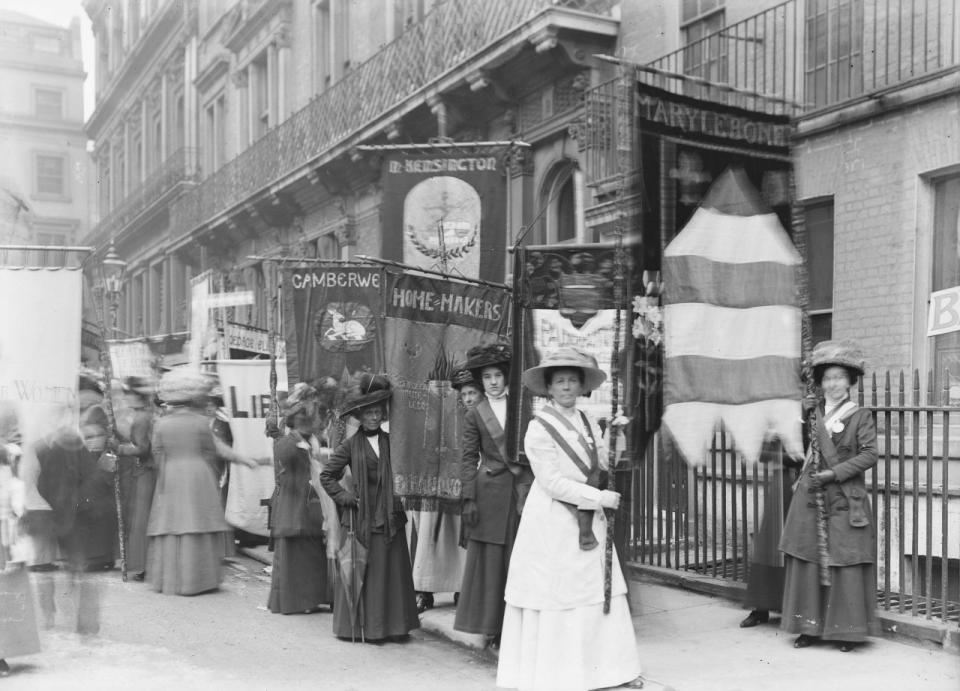
The Prisoners’ Pageant in 1910, including key members of the WSPU Emmeline Pethick-Lawrence, Sylvia Pankhurst and Emily Wilding Davison, themselves former prisoners. (Photo: Christina Broom/Museum of London)
Broom didn’t just take photos of suffragettes — she also became the official photographer to the army, entering their most intimate spaces and capturing their daily lives. “Her purpose was to be a business woman,” the book’s editor and Museum of London photographs curator Anna Sparham explains to Yahoo Beauty. “She knew that by photographing suffragettes carrying these great big campaigns that she would be able to market her pictures not just to women but also to spectators.” Many of Broom’s photographs were sold as postcards or printed in newspapers, further spreading the message of the suffragettes.
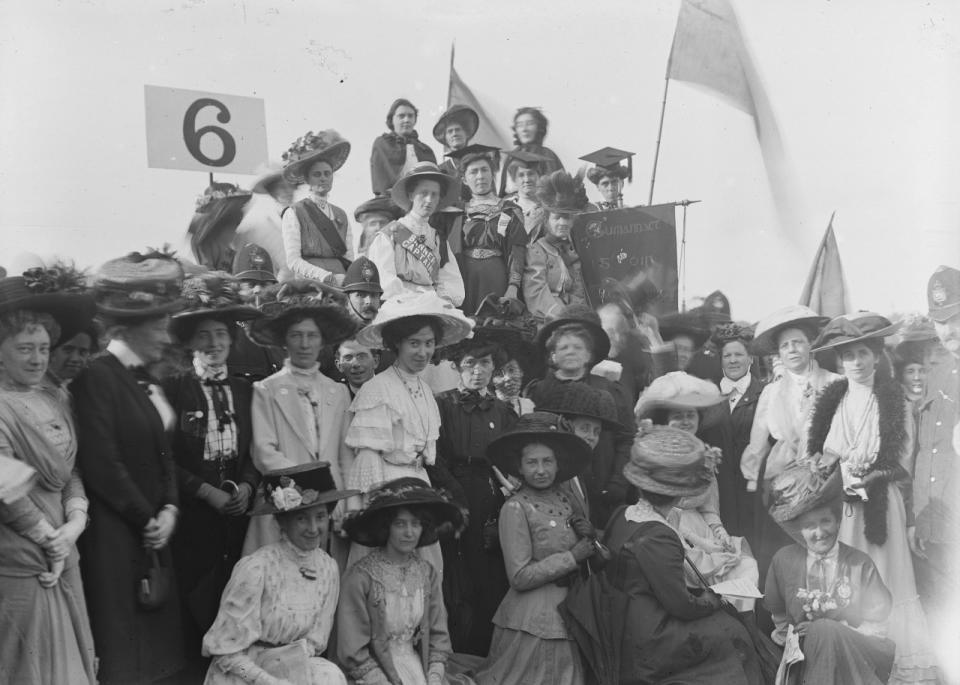
Suffragettes in London’s Hyde Park on Women’s Sunday on June 21, 1908. (Photo: Christina Broom/Museum of London)
There were two main divisions in the campaign to gain the right to vote: the Women’s Social and Political Union, who were regarded as the more militant side. They did things like letter bombs, throwing bombs, and destroyed paintings. The other division was the Women’s Freedom League, which was formed by 70 dissenters from the WSPU. They were less militant and more dedicated to staging protests without physical destruction. In the film, Streep plays the famous Emmeline Pankhurst, who was well known for her militant tactics, such as smashing windows through the windows of important members of Parliament and leading hunger strikes. Broom captured these action-heavy militant efforts on camera, but Sparham notes that she also captured the less militant side of the suffragette movement, too. “She was pretty neutral in that respect. She wanted to capture the beauty and occasion of such spectacles,” Sparham says. “At the same time, she understood that it was important to photograph both sides of the movement.”
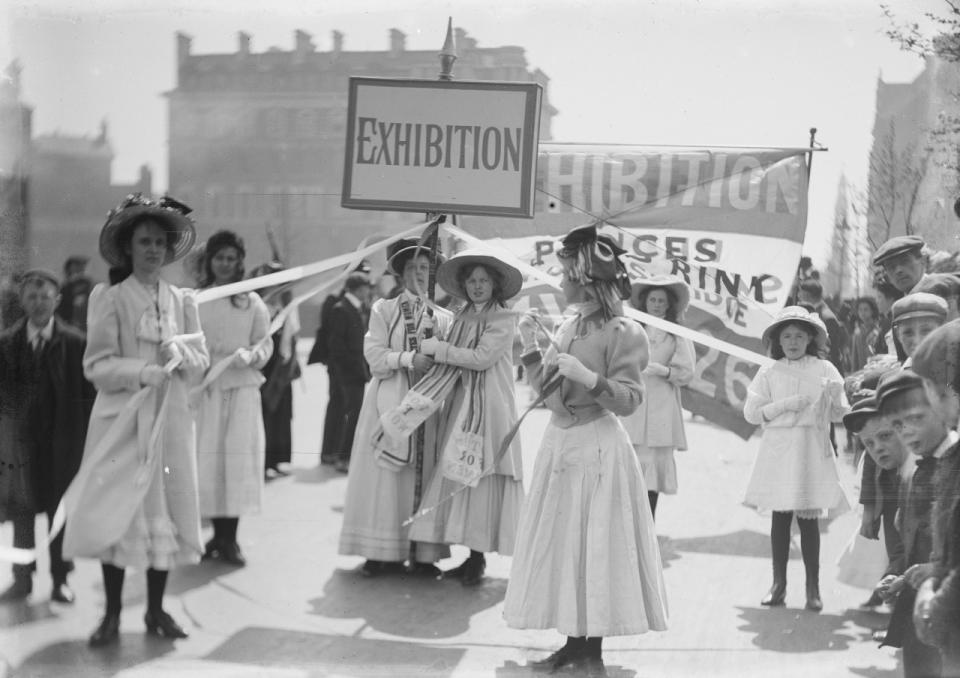
Young suffragettes advertising the Women’s exhibition in May 1909. (Photo: Christina Broom/Museum of London)
In 1910 alone, Broom produced 459 photographs, all using glass-plate negatives take by her heavy half-plate camera. Her equipment — the camera, tripod, and glass plate negatives — weighed 40 pounds altogether, but she, with her daughter’s assistance, lugged it around London on a daily basis. “Men did take photographs of the suffragettes. Men were also part of the campaign, but as a woman, notably on the street with her tripod and camera, she would have clearly gained better access,” Sparham says. In the Victorian era, photography for women was viewed as a mere hobby, an amateur pastime, but professional female photographers like Broom, who ventured outside of the studio and into the streets, pioneered the way for women to produce imagery about the world they live in — paving the path for directors like Suffragette’s Sarah Gavron.
Related:
Meryl Streep: ‘There Isn’t a Man in this Audience Who Could Out-Lift Serena Williams’
Meryl Streep: ‘Women’s Issues Are Men’s Problems’
Telluride Film Festival: Muted Beauty and Powerful Films Rule

